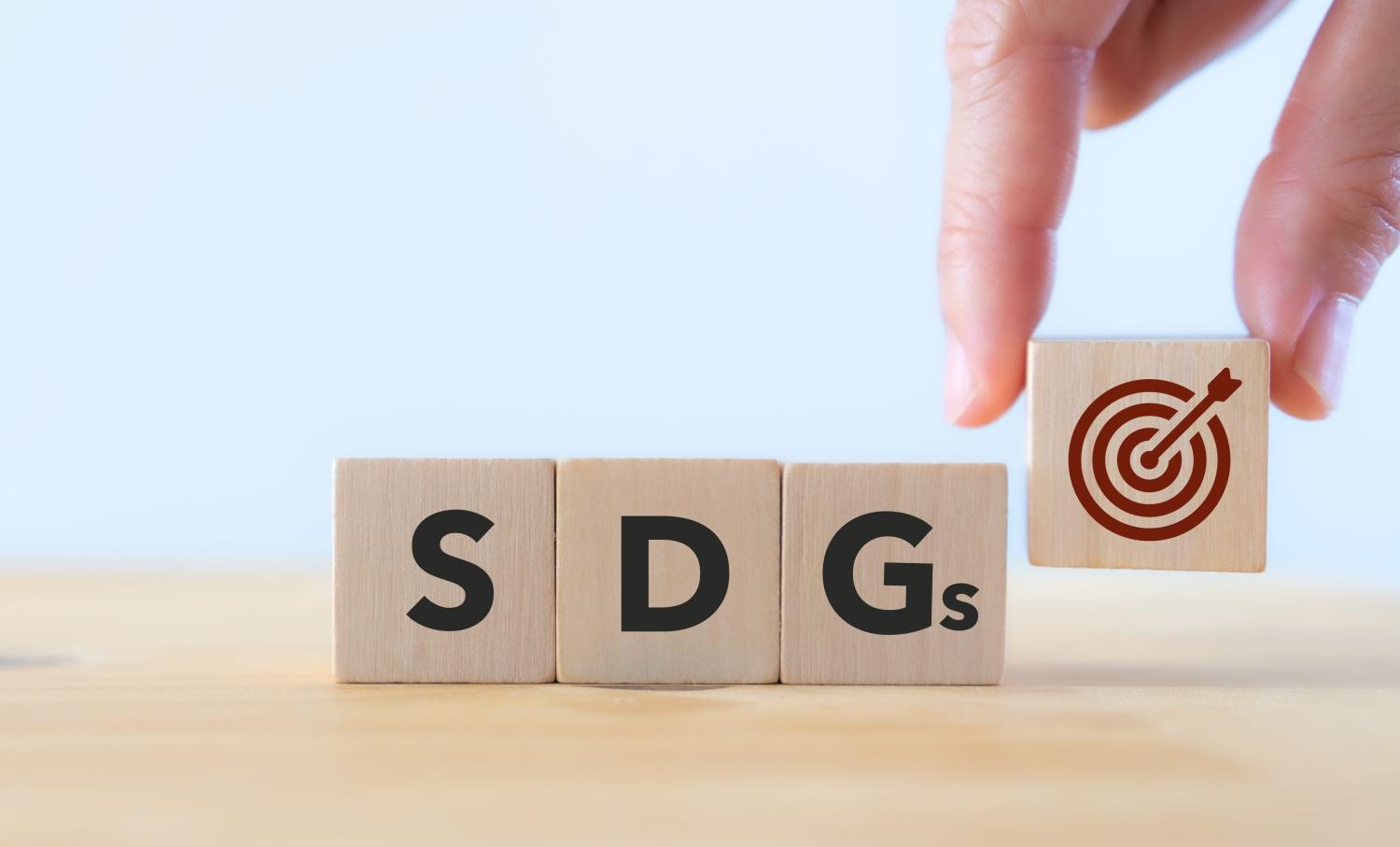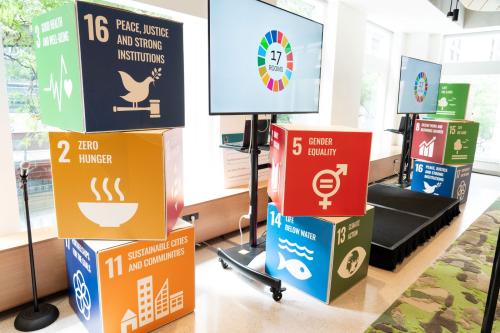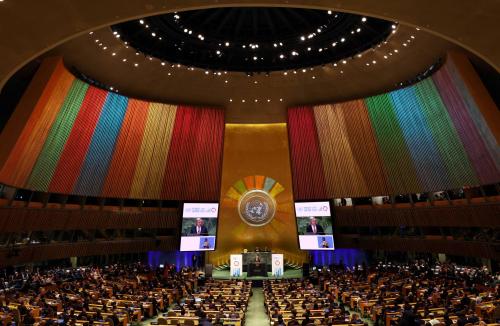Executive summary
At last September’s major U.N. SDG midpoint summit, a downcast narrative prevailed. Official statements stressed only 15% of the targets being on track, and many going in reverse.1 The U.N. Secretary-General (2023) called for an SDG “rescue plan.” Nature, the eminent scientific journal, asserted prior to the summit that the world’s effort “to make humanity sustainable is failing.”2
There is little argument that societies around the world are navigating many complicated economic, social, and environmental issues at once. The SDGs put a framework and metrics to many of these diverse problems. But the complexity of underlying trends does not lend itself to tidy simplifications. A more nuanced diagnosis of the dynamics is important to inform problem-solving over the SDG “second half” out to 2030. To this end, this paper offers an assessment of SDG-relevant empirical trends to date.
Four tests of progress
We identify four different standards to assess progress, each of which yields different interpretations of the data.
- Does the world look different today on SDG indicators than in 2015: Is the world getting better? Are fewer people in poverty? Are more ecosystems protected? Given the volatile economic and geopolitical circumstances, material progress in some areas could still count as an important success.
- Have there been any shifts in underlying trends since 2015: Has the SDG period been a period of accelerated improvement or slowdowns in progress? If the purpose of the SDGs was to quicken progress, this query could suggest that the SDGs may have had some discernible benefits, even if those benefits are not large enough to meet the stretch targets of the goals.
- Is the world on track to meet its agreed SDG ambitions by the 2030 deadline? Beyond the simple yes/no answer, this standard allows us to quantify the consequences of falling short of the goals and to identify which countries are facing the largest challenges.
- Are there any threshold effects, beyond which changes are abrupt and difficult, if not impossible to reverse? For many SDG indicators, a setback or delay can be reversed later on. But in some cases, there are tipping points beyond which it is impossible to recover. Like a car careening toward a cliff, changes in speed are less important than whether the driver stops in time to avoid falling over the edge. This applies especially to environmental indicators—such as when the planet’s climate, biodiversity, and ecosystems are determined by cumulative effects—and also to mortality indicators since lives lost cannot later be restored.
The case of under-five child mortality illustrates the range of takeaways inspired by different tests. The world achieved a 20% decline in the number of deaths of children under 5 over the first seven years of the SDG era, from 6.1 million deaths in 2015 to 4.9 million in 2022. But over the same period, 42 low- and middle-income countries saw a significant slowdown in their rate of progress compared to pre-2015 trends, and only 20 saw a significant acceleration. Fully 132 countries are on track to meet the SDG mortality target by 2030, and 60 countries are on a path to falling short. However, from 2024 through 2030, the shortfalls add up to 10.5 million children’s lives lost for good. So even though more than a million fewer children dying every year is a source of encouragement, more than 10 million deaths due to shortfalls over the next several years is a grave concern.
Eight findings
Our empirical strategy focuses on country-level trends across 24 SDG-related indicators with time-series data available for at least 100 countries since 2015. Although we would prefer to include a wider array of indicators, limited cross-country data availability impedes our ability to do so. By applying the various lenses for assessing SDG progress, we distill eight key findings:
- In considering how the world looks today compared to 2015, things are better on most indicators, even if none are currently on track for their 2030 targets. However, on a handful of issues—including food insecurity, nutrition, malaria incidence, road deaths, and greenhouse gas emissions—things look worse.
- In comparing pre- and post-2015 country rates of progress, three indicators—HIV incidence, access to antiretroviral treatment, and access to electricity—registered accelerated gains since 2015, while eight have seen no change, and nine have seen a slowdown in the rate of progress.
- A longer-term assessment of trends shows that many shortfalls in the SDGs were apparent before the crises of the 2020s. Blame for limited progress cannot be attributed simply to COVID-19 and other unexpected shocks.
- When looking at country-level accelerations and slowdowns across indicators, there is no single story on how individual countries are doing on the SDGs, and there is limited correlation between issues. Even the poorest countries are seeing accelerated rates of progress on some issues, while no countries are making accelerated progress on all issues.
- When translating current trajectories for SDG shortfalls to absolute numbers of people affected, huge numbers of people will be left behind on specific issues like access to basic sanitation services (an estimated 1140 million people left behind), undernourishment (981 million), severe food insecurity (593 million), extreme poverty (570 million), access to electricity (540 million), access to safe drinking water (533 million), and access to affordable internet (376 million).
- SDG shortfalls on mortality indicators add up to more than 34 million additional estimated lives lost from 2024 through 2030. This includes 18.8 million premature deaths to noncommunicable disease, 10.5 million children under 5, 4.3 million traffic deaths, and 1.2 million maternal deaths.
- The geographic concentration of people left behind differs by issue. For seven indicators, more than half the people left behind will be concentrated in just five countries.
- Even where environmental progress since 2015 is clear, the pace may not be fast enough to avoid nature’s potentially imminent tipping points.
As a general caveat, our aim is to distill key patterns amid global complexity, rather than to present precise point estimates. All forward-looking estimates should be interpreted with appropriate caution amid the inherent uncertainty and limitations embedded in such calculations.
Implications
Despite the world’s deep and ongoing strains, the human condition has improved on several fronts since 2015. But many positive trends were already in motion prior to 2015 and improvement alone does not meet the higher normative standards established in the SDGs. Issue-specific progress assessments suggest issue-specific policy architectures still matter. At the same time, widespread gaps relative to the world’s agreed ambitions for 2030 suggest the need for more systematic changes in approaches across SDGs. With only six years remaining to the deadline, there is tremendous value in the existence of time-bound international goals to inform substantive assessments on the nature of global sustainable development progress during a turbulent political era. A carefully nuanced approach to assessing absolute changes, rates of progress, and potential tipping points—country by country and target by target—remains crucial to identifying better pathways toward achieving the world’s stated ambitions.
-
Footnotes
- See, for example, U.N. (2023a). Responding to cascading global crises, SDG summit launches new phase of accelerated action on the Sustainable Development Goals.
- See Nature (2023). We must act now to save sustainability. Nature 618, 647. doi:10.1038/d41586-023-01989-9.






